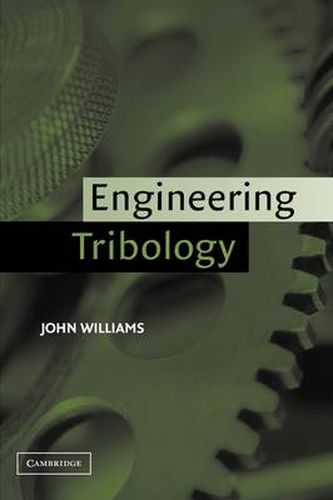Readings Newsletter
Become a Readings Member to make your shopping experience even easier.
Sign in or sign up for free!
You’re not far away from qualifying for FREE standard shipping within Australia
You’ve qualified for FREE standard shipping within Australia
The cart is loading…






An ideal textbook for a first tribology course and a reference for designers and researchers, Engineering Tribology gives the reader interdisciplinary understanding of tribology including materials constraints. Real design problems and solutions, such as those for journal and rolling element bearings, cams and followers, and heavily loaded gear teeth, elucidate concepts and motivate understanding. The hallmark of this work is the integration of qualitative and quantitative material from a wide variety of disciplines including physics, materials science, surface and lubricant chemistry, with traditional engineering approaches. Reviewers have praised the coverage of: both elastic and plastic stresses at surfaces in contact; the mechanisms of friction, wear and surface distress, and wear; thick pressurized fluid films in both hydrostatic and hydrodynamic bearings; elasto-hydrodynamic lubrication; boundary lubrication mechanisms; dry and marginally lubricated bearing design; the design of rolling contacts and bearings.
$9.00 standard shipping within Australia
FREE standard shipping within Australia for orders over $100.00
Express & International shipping calculated at checkout
An ideal textbook for a first tribology course and a reference for designers and researchers, Engineering Tribology gives the reader interdisciplinary understanding of tribology including materials constraints. Real design problems and solutions, such as those for journal and rolling element bearings, cams and followers, and heavily loaded gear teeth, elucidate concepts and motivate understanding. The hallmark of this work is the integration of qualitative and quantitative material from a wide variety of disciplines including physics, materials science, surface and lubricant chemistry, with traditional engineering approaches. Reviewers have praised the coverage of: both elastic and plastic stresses at surfaces in contact; the mechanisms of friction, wear and surface distress, and wear; thick pressurized fluid films in both hydrostatic and hydrodynamic bearings; elasto-hydrodynamic lubrication; boundary lubrication mechanisms; dry and marginally lubricated bearing design; the design of rolling contacts and bearings.